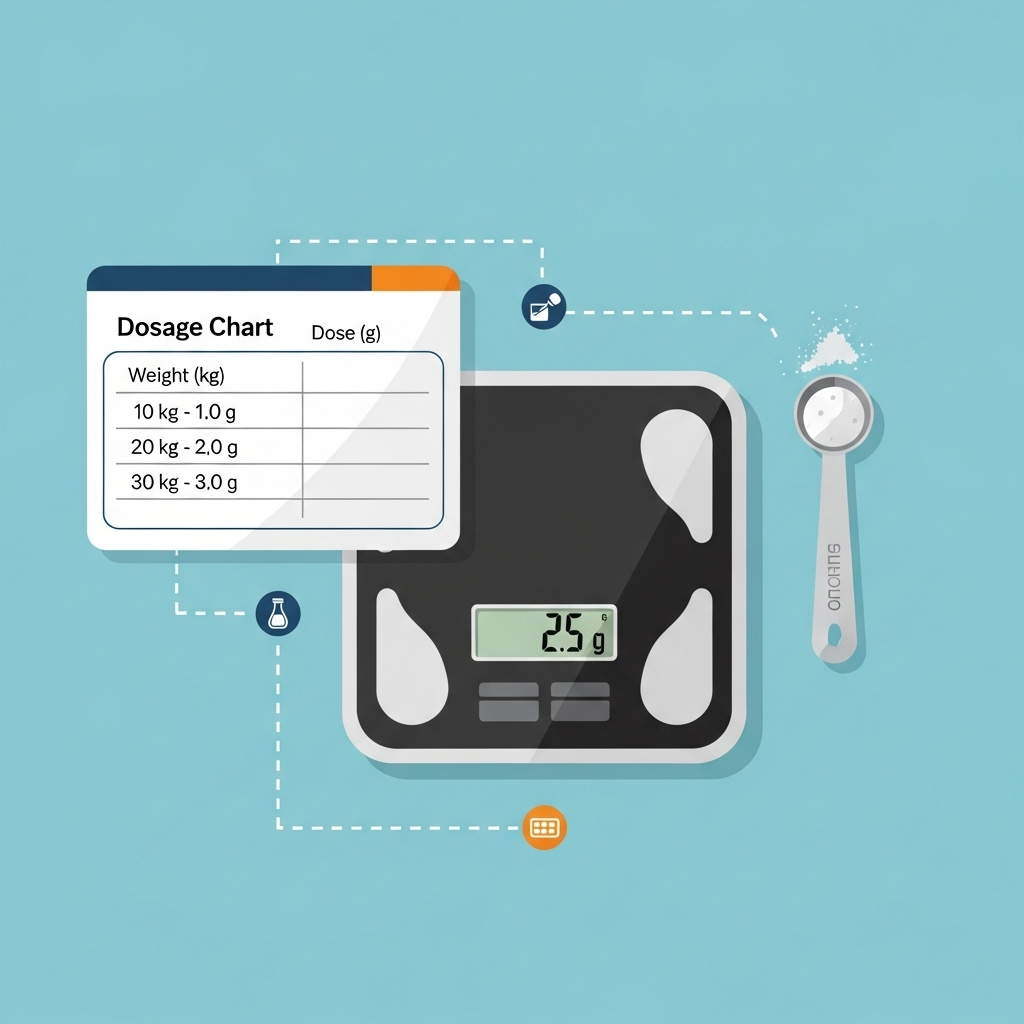Pet Probiotic Dosage by Weight: Simple Chart

Probiotics are live microorganisms that can support digestion, stool quality, and immune health in cats and dogs. Choosing the right amount depends on your pet’s size, the product’s concentration (measured in CFUs — colony forming units), and the specific strains used. This guide gives a clear, practical “pet probiotic dosage by weight chart” and safe tips for using probiotics at home. It is not a substitute for veterinary advice — always check with your veterinarian before starting any supplement.
How probiotics for pets work (brief)
Probiotics help maintain or restore a balanced gut microbiome by adding beneficial bacteria or yeast. They can reduce diarrhea, help with some cases of chronic digestive upset, and support immune function. Effects vary by strain, dose, and the individual animal.
Important safety notes before dosing
- Consult your veterinarian, especially for puppies, kittens, elderly pets, or animals with weakened immune systems or serious chronic illnesses.
- Follow the specific product label — different products contain different strains and concentrations.
- Probiotics should be given with food unless the product specifies otherwise to improve survival through the stomach.
- If your pet is on antibiotics, give the probiotic at least 1–2 hours before or after the antibiotic dose to improve effectiveness (ask your vet for exact timing).
Pet probiotic dosage by weight chart (general guideline)
The table below shows common guideline ranges of total daily CFUs (colony forming units). These are general estimates you can discuss with your veterinarian. Many pet probiotic products provide a recommended serving size on their label that already accounts for CFUs and strain selection.
| Pet Weight (lbs) | Typical Daily CFU Range | Administration Notes |
|---|---|---|
| Under 5 lbs (tiny cats, toy breeds) | 100 million – 500 million CFU | Start at low end; once daily. Use cat-specific products for kittens. |
| 5 – 20 lbs (small dogs, most cats) | 0.5 – 1.5 billion CFU | Common small-dog/cat serving sizes; split into AM/PM if needed. |
| 20 – 50 lbs (medium dogs) | 1 – 5 billion CFU | Follow label; many dog products recommend 1–2 capsules or scoops daily. |
| 50 – 90 lbs (large dogs) | 3 – 10 billion CFU | Larger doses often used for GI upset; consult vet for persistent issues. |
| 90+ lbs (giant breeds) | 5 – 20 billion CFU | Some products offer “large-breed” formulations. Adjust under vet guidance. |
How to interpret the chart
The CFU ranges above are a general starting point. If a product label lists CFUs per serving, give the number of servings that puts your pet within the suggested range for their weight. Some high-potency products provide billions of CFUs in a single small dose; others are lower-strength and require larger servings.
Choosing the right probiotic product
When selecting a probiotic:
- Look for species-specific or veterinary-formulated products when possible.
- Check the strains listed (examples: Enterococcus faecium, Lactobacillus spp., Bifidobacterium spp., Saccharomyces boulardii). Different strains have different evidence for benefit.
- Prefer products that list CFUs at time of expiration (not just at manufacture).
- Consider storage needs — some require refrigeration, others are shelf-stable.
- Choose third-party tested products or those with clear manufacturing standards when available.
Administration tips
- Start with the lower end of the recommended range and monitor stool quality, appetite, and energy for 7–14 days.
- Give with food unless the product says otherwise; food can protect microbes from stomach acid.
- If your pet has loose stools or mild gas at first, this can be a temporary adjustment. If symptoms worsen or persist, stop and contact your veterinarian.
- If your veterinarian prescribes a probiotic for a specific condition, follow their exact dosing schedule — therapeutic doses may differ from maintenance doses.
Pros and Cons
| Pros | Cons |
|---|---|
| May improve stool consistency and digestion; supports immune health; generally well tolerated. | Supplement quality varies; not all strains are proven for pets; rare risk for infection in very ill or immunocompromised animals. |
When to contact your veterinarian
Contact your vet if your pet has severe diarrhea, vomiting, blood in stool, is lethargic, has a fever, or shows signs of an adverse reaction after starting a probiotic. Also consult your vet before starting probiotics if the pet is on immunosuppressive drugs, chemotherapy, or has a serious chronic disease.
FAQ
- Q: How long before I see results?
- A: Some pets show improved stool quality within a few days; others may take 2–4 weeks. For chronic issues, your vet may recommend a longer trial.
- Q: Can I give human probiotics to my pet?
- A: Some human probiotics are safe, but many are not optimized for pets. Use a pet-formulated product or check with your veterinarian first.
- Q: Can probiotics cause side effects?
- A: Mild gas or soft stools can occur temporarily. Severe or persistent issues are uncommon but should prompt a vet visit.
- Q: Should I give probiotics during a course of antibiotics?
- A: Often yes — they can help reduce antibiotic-associated diarrhea. Give probiotics at least 1–2 hours apart from antibiotics, and confirm timing with your vet.
Key Takeaways
- This chart offers general “pet probiotic dosage by weight” guidelines in CFUs — use product labels and your vet’s recommendations to fine-tune dosing.
- Start low, monitor your pet, and allow 1–4 weeks to see benefits for many digestive concerns.
- Choose reputable, pet-appropriate formulations and store them as directed to preserve potency.
- Consult your veterinarian before starting probiotics for puppies, kittens, elderly pets, or animals with health issues.
Note: The CFU ranges in this guide are general starting points meant to help you discuss options with your veterinarian. They are not a substitute for individualized veterinary care.
Disclaimer
This content is for informational purposes only and does not replace professional veterinary advice, diagnosis, or treatment. Always consult your veterinarian before starting any supplement, especially if your pet has a health condition or is taking medications.

Leave a Reply